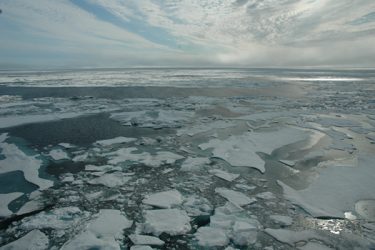
Arctic sea ice in recent decades has declined even faster than predicted by most models of climate change. Many scientists have suspected that the trend now underway is a combination of global warming and natural climate variability.
A new study finds that a substantial chunk of summer sea ice loss in recent decades was due to natural variability in the atmosphere over the Arctic Ocean. The study, from the University of Washington, the University of California, Santa Barbara, and federal scientists, is published March 13 in Nature Climate Change.
“Anthropogenic forcing is still dominant — it’s still the key player,” said first author Qinghua Ding, a climate scientist at the University of California, Santa Barbara who holds an affiliate position at the UW, where he began the work as a research scientist in the UW’s Applied Physics Laboratory. “But we found that natural variability has helped to accelerate this melting, especially over the past 20 years.”
The paper builds on previous work by Ding and other UW scientists that found changes in the tropical Pacific Ocean have in recent decades created a “hot spot” over Greenland and the Canadian Arctic that has boosted warming in that region. The research was funded by the National Oceanographic and Atmospheric Administration, the National Science Foundation, NASA and the Tamaki Foundation. Other co-authors are Stephen Po-Chedley, Eduardo Blanchard-Wrigglesworth and Ryan Eastman in the UW Department of Atmospheric Sciences; Eric Steig in the UW Department of Earth and Space Sciences; and Michelle L’Heureux, Kristin Harnos and Qin Zhang at NOAA’s Climate Prediction Center.
Read more at UW Today »
